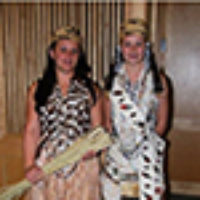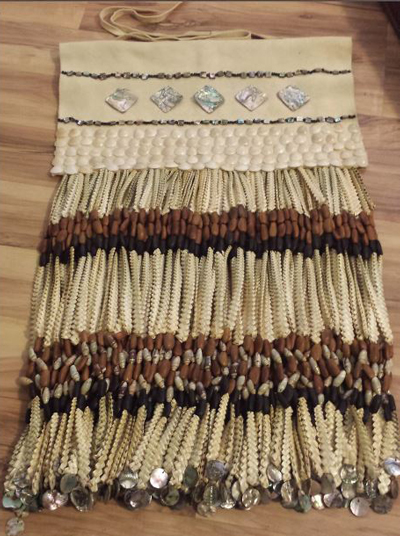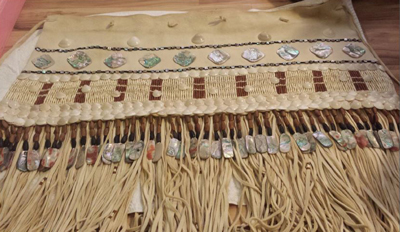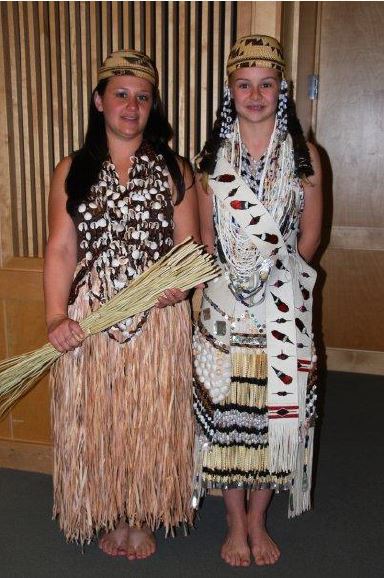
Leslie McCovey
For Indian tribes of Northwestern California the art form of making female regalia, particularly ceremonial dresses was nearly lost. As native people fight against cultural erasure to retain their languages and cultural practices, the art form of regalia making, fortunately, has regained a high frequency of practice in the current generations. The form requires a high level of skill in the collecting, processing, and preparing of the many natural and contemporary materials, utilizing traditional techniques and practices. The materials are then combined culminating into a work of art worn for ceremonial dances.
Leslie McCovey grew up in a family context where learning regalia making was inevitable. Her mother was meticulous in the manner of planning, gathering, processing, and preparing materials thus creating a number of beautiful ceremonial dresses. McCovey learned from her grandmother the love and skill of gathering and processing the natural materials. Her father is also a regalia maker and a fluent speaker of the Hupa language, who instilled the importance and responsibility of ceremonial regalia in Hupa, Yurok, and Karuk culture. McCovey continues to pass the knowledge to her four children.
As a master artist in ACTA’s Apprenticeship Program in 2016, master artist Leslie McCovey will extend her knowledge to her apprentice Alisa Harrison to enrich and deepen her understanding of skills and meaning traditional regalia making of the Northern Indigenous groups of California (Karuk, Yurok and Hupa).



